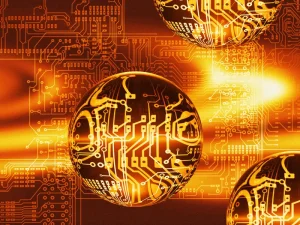
A new study has revealed a way to reduce the catastrophic errors suffered by quantum computers being built by Amazon, Google, and IBM as a result of cosmic rays from outer space. This error rate could be reduced by a half-million-fold, to less than once a month.Theoretically, quantum computers can find answers to problems regular computers can’t. Their essential components, known as quantum bits or qubits, are connected by a quantum effect called entanglement.Quantum computers depend on quantum effects which are extremely vulnerable to disruptions from the environment, making them suffer an error for every 1,000 operations. Quantum physicists aim to compensate for the high error rate by distributing quantum information across numerous quantum bits. This would help them detect and correct errors, so that a cluster of many ‘physical qubits’ can make up one useful ‘logical qubit’.Amazon, Google, and others aim to design fault-tolerant quantum computers making use of superconducting circuits as qubits, because they are potentially scalable to thousands of physical qubits.A 2021 Google study revealed that these superconducting circuits are susceptible to errors from cosmic rays from deep space. They hit our planet from every direction with large amounts of energy, surpassing anything the earth can produce.‘Cosmic ray events therefore overwhelm the limited capacity of conventional quantum error correction codes,’ says Qian Xu, a quantum physicist at the University of Chicago, and the study’s lead author.A strike by a cosmic ray can erase all the information on a quantum processor, and the computer may experience failures every 10 seconds, which is detrimental to tasks that take several hours to complete. Cosmic rays can also disrupt semiconductor spin qubits.Xu and the research team created a strategy to reduce the rate of errors to just once every 51 days. ‘Quantum computers, with sufficient protection, can be robust against very catastrophic events, such as cosmic ray events,’ says Xu.The researchers divide a quantum computer into several data chips, each with multiple superconducting qubits. These chips are linked to an ‘ancilla chip’ with additional superconducting qubits which observe data chip performance.To deal with regular errors, the chips run a customary quantum error correction code. They run a second quantum error correction code to protect against cosmic rays.In the novel study, the data of the quantum computer is spread across multiple data chips. So when a cosmic ray strikes the quantum computer, this compartmentalization reduces the damage from the impact.After the strike, the ancilla chip works with the data chips not disrupted by the cosmic ray to correct the disrupted ones and restore the computer’s data. ‘The whole computer does not have to start over if some of the chips are damaged by the cosmic ray event. In principle, we can design more sophisticated codes to tolerate more cosmic ray events,’ Xu says.Unlike previous approaches, this novel strategy requires only few resources and almost no hardware modifications. Xu says the researchers would like to test their method on Google’s Sycamore processor or the IBM quantum cloud.
By Marvellous Iwendi.
Source: IEEE Spectrum